|

Synopsis:
With the help of his tippling friend (Arthur O’Connell) and loyal secretary (Eve Arden), a small-town lawyer (Jimmy Stewart) agrees to defend an army lieutenant (Ben Gazzara) accused of murdering the barkeeper who raped his wife (Lee Remick). Will Gazzara’s plea of temporary insanity set him free, or will the prosecuting attornies (Brooks West and George C. Scott) successfully convict him in front of the no-nonsense judge (Joseph Welch) presiding over the courtroom?
|
|
Genres, Themes, Actors, and Directors:
- Ben Gazzara Films
- Cat and Mouse
- Courtroom Drama
- Eve Arden Films
- George C. Scott Films
- Jimmy Stewart Films
- John Qualen Films
- Lawyers
- Lee Remick Films
- Otto Preminger Films
- Rape
Review:
Lee Remick’s sexy, sultry performance is the central, most memorable draw of this surprisingly non-violent tale of murderous vengeance, directed by Otto Preminger and based on Michigan Supreme Court Justice John D. Voelker’s novel. DVD Savant refers to it as “still the best courtroom drama ever, and perhaps director Otto Preminger’s finest movie overall”, while in the book 1,001 Movies You Must See Before You Die, reviewer Kim Newman similarly asserts that this once-controversial film — daring to use terms like “panties” and “spermatogenesis” — remains “a trenchant, bitter, tough, witty dissection of the American legal system”, and is “the best trial movie ever made”. While I’m not in agreement with this sentiment, the film certainly does present the trial process in an exacting and seemingly realistic fashion, thanks in no small part to the presence of non-actor Welch, famous for putting Senator Joseph McCarthy appropriately to shame. From the striking opening titles by Saul Bass to Sam Leavitt’s atmospheric cinematography and strong performances across the board, Anatomy of a Murder is both a visual and an acting delight — though I’ll profess to finding it overly long, overly talky, and ultimately not as engaging or satisfying as one would hope given its credentials. With that said, it’s certainly worth viewing at least once by all film fanatics, and possibly many more — as DVD Savant writes, it “never fails to reveal more complexities, no matter how many times one sees it”.
Redeeming Qualities and Moments:
- Saul Bass’s opening and closing credits
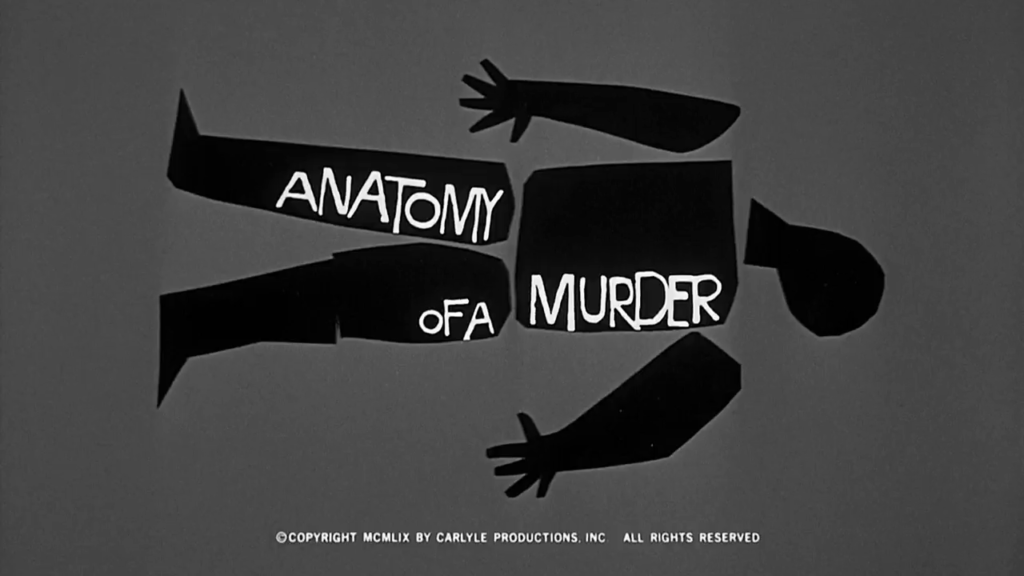
- Jimmy Stewart as Paul Biegler
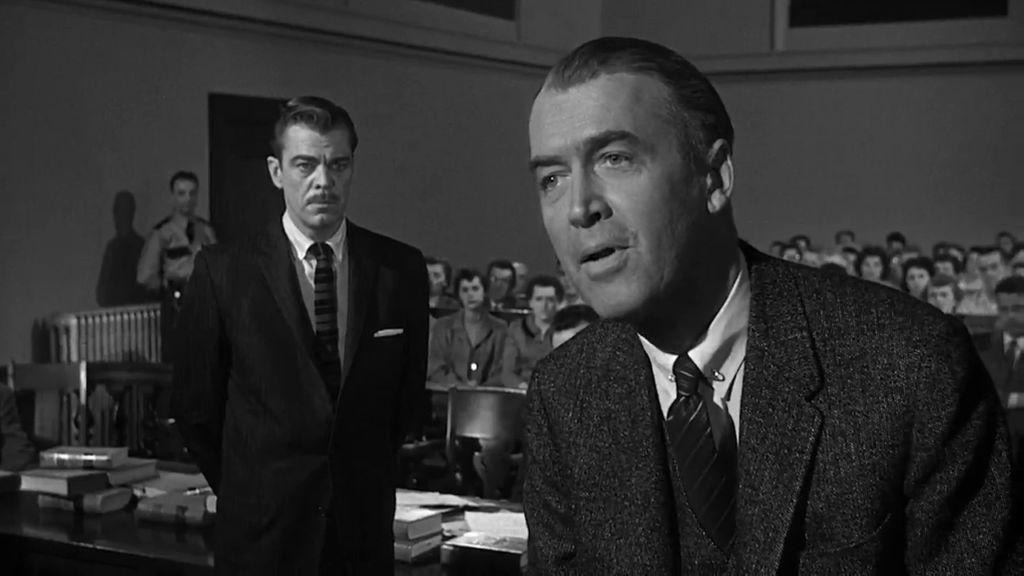
- George C. Scott as Claude Dancer

- Lee Remick as Laura Manion (nominated by Peary as one of the Best Actresses of the Year in his Alternate Oscars)
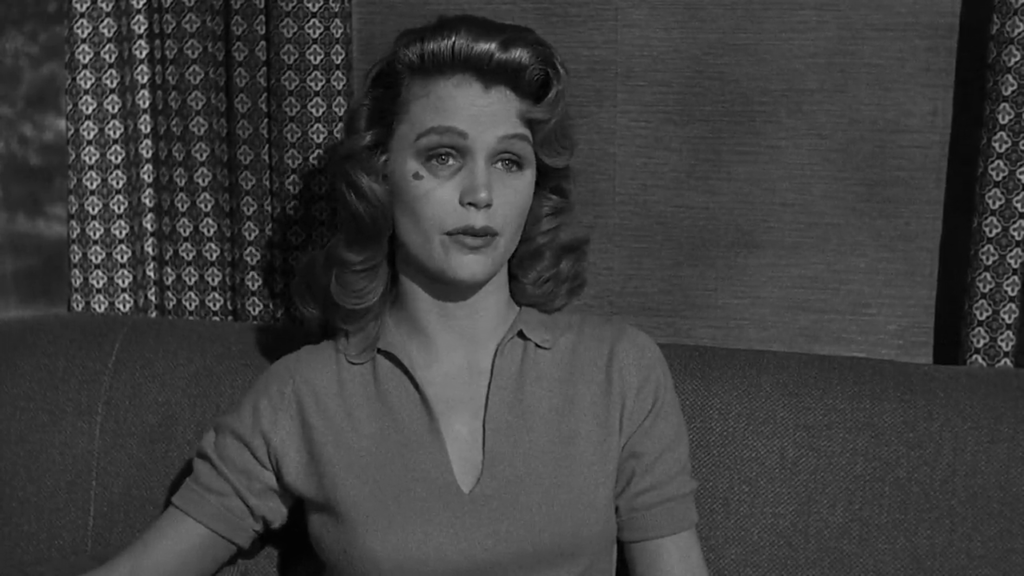
- Ben Gazzara as Lt. Manion
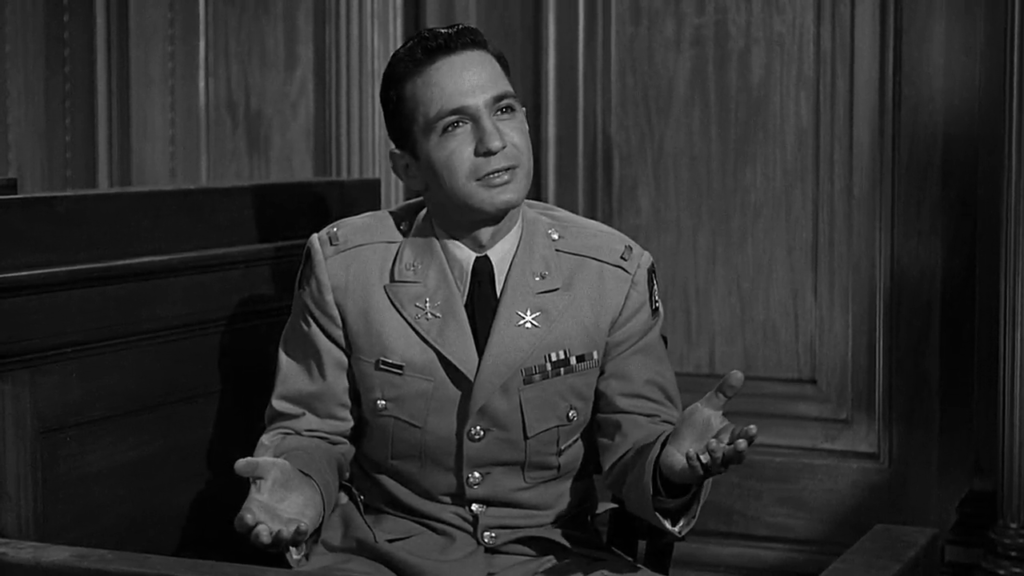
- Joseph N. Welch as Judge Weaver

- Sam Leavitt’s cinematography
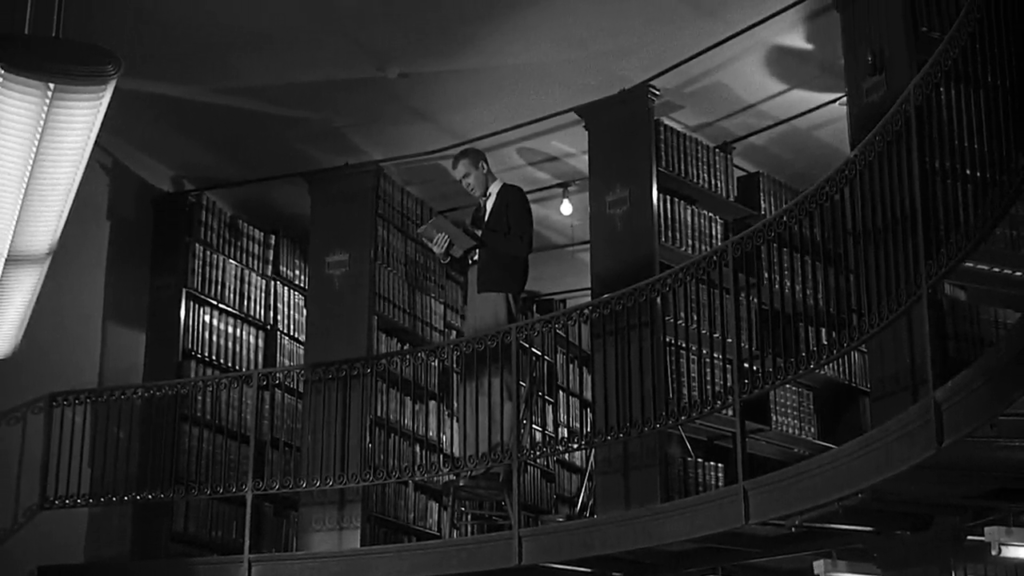
Must See?
Yes, for its historical relevance. Listed as a Personal Recommendation in the back of Peary’s book.
Categories
- Historically Relevant
- Oscar Winner or Nominee
(Listed in 1001 Movies You Must See Before You Die)
Links:
|








2 thoughts on “Anatomy of a Murder (1959)”
Must-see for all film fanatics – not only as an important document that’s of general audience interest but as one of Preminger’s best films (something of a ‘photo-finish’ with ‘Advise and Consent’),
I could not remember the last time (before now) that I saw this flick. It had been long enough ago that, as I started watching, I knew I could not remember the ending at all (nor the twist in the denouement). I liked that – because it allowed me the luxury of everything feeling new again and the tensions within the film remained fresh.
Film fanatics (God bless ’em) end up, of course, seeing mountains and mountains of film. As a result, one of the occupational hazards is that – if there is a long gap in-between viewings of a particular film… even if we liked the film the last time we saw it, it can sometimes (when starting a revisit) be hard to remember whether we did like it or not.
I did remember that I admired ‘Anatomy…’ but, beyond that, I couldn’t recall. Imagine my surprise, then, when I found myself caught up in it as if seeing it for the first time. (I started it late last night, thinking to maybe watch half… and then watched the entire film, unable to stop midway.)
That would be my answer to ‘Is it too long and too talky?’ I obviously don’t feel it’s too long – and that’s quite an accomplishment for a film like this that runs 2 hours and 40 minutes. We don’t even see the murder (!) – which would normally seem mandatory; something the producers (as is often the case with a murder story) might insist on starting a film with, in order to ‘hook’ the audience. But what we do get is nevertheless (as O’Connell’s Parnell says, “Dear, sweet, endearing word, ‘nevertheless’.”) consistently riveting.
As for talky… there’s good talk and bad (or unnecessary) talk when it comes to films. Quality and usage are everything. It’s true that some films *are* talky – seemingly for its own sake. But when the talk is urgent, pertinent and captivating (as is the case here), talky is a plus.
This is a film that asks you to pay attention yet keeps you on your toes – as a sort of reward for the concentration. Preminger’s direction is so smooth and unobtrusive; here he made it a very clear point to let the story tell itself almost in documentary-style. The performances show a strong cast, across-the-board (and Welch’s rare participation is, indeed, a special kind of treat). Yes, I would consider this required viewing.
Agreed a must see for all the reasons highlighted; a great film.